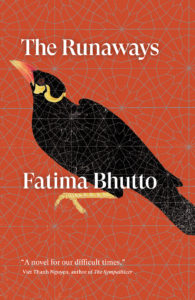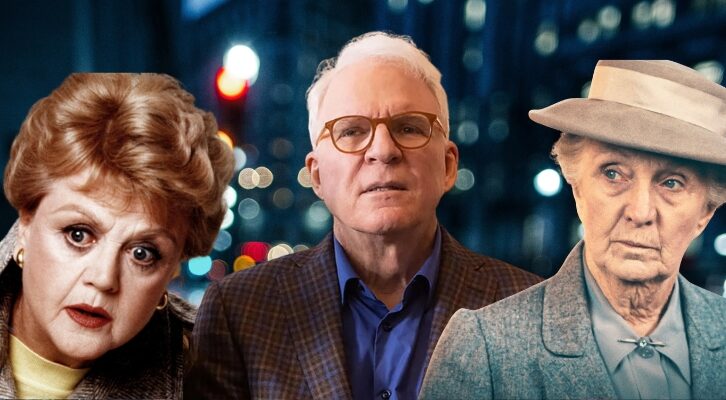
Social Media, Loneliness, and Rabbit Holes to Radicalism
Fatima Bhutto on Writing a Novel of Economic Desperation
and Violence
It is the strange twilight between daytime and darkness, jetlag and wakefulness, and I am standing at US immigration in a brightly lit airport exactly a year before the global lockdown and the swift, terrorizing spread of Covid-19 blazed across all our borders. I have handed over my large, outsize jungle-green Pakistani passport and endured all the commentary and questioning it comes with. I have surrendered a banana (“Ma’am, you should have declared that”), and have helpfully guided the immigration officer back on track when he forgot, still holding my passport, whether I was Pakistani or—what was the other one?—Indian.
What do you do? The airport official asked me, after thumbing close to 100 stamped pages straight to an old visa for Iran. He had just asked me why I was in Iran, his tone as cold and bored as when he confirmed that I had a return ticket. I had gone to write about the country, I replied.
So, what do you do?
I’m a writer.
What do you write?
I’ve just published a novel, actually. I smiled, forgetting for a brief second where I was. My book had just come out in England, I was flying to the US after finishing the London book tour. The officer, holding my passport in his hand, didn’t smile back at me. He nodded, scribbling something down. In fact, he had only one question for a Muslim novelist born in Kabul, raised in Damascus, who holds a Pakistani passport and has recently visited Iran:
Does your novel advocate violence?
*
My novel, The Runaways, is about young radicals driven to spectacular violence—indeed to Daesh. But it advocates violence as much as a book about cancer advocates cancer. The task of a writer of fiction is not to advocate anything at all but to create and sustain an illusion of reality through well-chosen details. In any case, we don’t need books by Muslims to advocate violence. Social media does that perfectly well, constantly uploading scenes of drone attacks, torture, and suicide bombings.
The tweeters and fabulists of Instagram and Facebook are Hindu, Christian, Buddhist, Jewish as well as Muslims. The fantasies of violence and power that once overwhelmed social media, prior to international coronavirus-related panic, infection graphs and mask pictures, were never confined to one religious group over another.
When I began to write my novel five years ago, my characters were only nominally Muslim. One of the main characters is in fact a poor Christian woman. I felt it was important to explore the role of poverty and how ferocious inequality fuels radical movements. The powerlessness felt by my main female character is manifold: she is a woman, a Christian, growing up poor in a Karachi slum—the setting of brutal, everyday injustice. It is her extreme but commonplace experience—the continuous violation of her dignity—that pushes her to take up arms against the world.
Then and now, I had no time for the link between Islam and terrorism that was so quickly established by Western pundits after 9/11 and still weighs heavily on the minds of US airport officials. So many recent claimants of Daesh—from Shamima Begum to Hoda Muthana to Omar Mateen, the Pulse Nightclub shooter—knew nothing of Islam and by their own admission had picked up a Chinese-whispers version of the religion, passed down from jihadist recruiters, internet hucksters, or Islam for Dummies, a book two Birmingham runaways to Daesh bought off Amazon before fleeing to the Caliphate.
It is no surprise that Alexandre Bisonette . . . checked Ben Shapiro’s Twitter 93 times in the month before his terror attack.
Moreover, terrorism since its global spread in the late 19th century is a tactic that has been used by people of all religious and national backgrounds—after all, it was the Tamil Hindus who pioneered suicide-bombing (the first female suicide bomber of Lebanon was Sana Mehaidli, an Orthodox Christian and a socialist) and Basque ETA separatists who popularized car bombs.
As a novelist, I was not interested in the pronouncements of jihadist ideologues or the bloated anti-Islam brigade but in the specific experiences of powerlessness—economic, political, and sexual. My main character was a young British-Indian man growing up in Portsmouth and who, sexually conflicted and burdened by the casual racism of British society, is further tormented by his failure to achieve the respect and visibility that global capitalism promised but failed to deliver. I wanted to see how he, spurred on by the allure of social media fame and a fantasy of unique political significance, yet haunted by feelings of inadequacy, comes to see violence as both a way of life and signature personal style.
Social media is made up of shamefully ambivalent platforms—Twitter, Facebook, Instagram—that have promoted and amplified the ugliest voices of our age. Ben Shapiro (“Facts don’t care about your feelings” is his pinned tweet) uses his Twitter to promote a dark, unmoored agenda of hate and bigotry all the while growing his band of agitated, incel followers.
It is no surprise that Alexandre Bisonette, who killed six people in a Quebec mosque in 2017, checked Shapiro’s Twitter 93 times in the month before his terror attack, riveted as he was by Shapiro’s warnings of immigrants, Muslims, and foreigners out to eradicate Western Civilization.
The shooter also checked President Trump’s Twitter 417 times. Unlike Shapiro, who could (at least in theory) be removed from the platform, there have been only minimal checks on Trump’s vainglorious boasts and shoddy incitements online—a disclaimer correcting a tweet and the removal of a Facebook post—but why would there be?
He is one of the most powerful constituents of this virtual world, joined by other authoritarian and dangerous figures. When no Western country would give India’s Prime Minister Narendra Modi, then the Chief Minister of Gujarat, a visa in the aftermath of the 2002 bloody riots that killed nearly 2,000 Muslims in his state, he was welcomed and adored on social media, followed by tens of millions.
*
Social media is a platform utilized by terrorists, groomers, and mediocrities of all stripes—writers shamelessly retweeting praise, actresses lecturing international audiences on human rights, megalomaniacs and would-be messiahs—but it is also addictive and thrilling and I can’t stay off it. It is a space perfectly sized and suited to the loneliness of modern life, where we are more connected than ever before, but those connections are tethered to nothing.
Our lives are built on ceaseless production and competition, we must always be doing, attached to our emails, always reachable, and constantly working yet we are ultimately lonely souls seeking to commune more with the world. In a post-Covid world, where even the ambitious and striving are no longer allowed real life connections and competition, social media has been an especially dark chamber.
In my own life of dislocations and exiles, forced and chosen, social media serves to create the semblance of permanence and security. The favorite question of many—where are you these days? Where do you live?—to which I rarely have a good answer is easily solved by social media. Where am I? I’m right here, where you left me. You will find me in the same place, if not in real life, then at least online, tomorrow and the day after that.
This is totally contrary to my own life and understanding of the self, which is never fixed, discernible or definable but constantly in flux. Social media allows me the cipher of a public self which allows the real me (whatever that is) to retreat so that I can work and live in privacy.
My online presence is a fractal of what I am or am feeling at any given point. I gave up trying to locate my first ever tweet from ten years ago but seem to remember that it might have paid some homage to Maureen Dowd’s 2009 interview with Biz Stone and Evan Williams, where she asked Twitter’s founders questions such as “Was there anything in your childhood that led you to want to destroy civilization as we know it?” and forced them to answer in 140 characters or less.
On Instagram, I post about books and my work but never my personal life. As a writer of fiction, my eye is alert to the unknown and uncertain, to touching the corners of what haunts me until I have found my way to its core, a process that requires much time, investigation and thought. This impulse, so vital to art, is antithetical to social media. Fiction is about illusions, sustaining and dismantling them. Social media is too coarse a medium for the illusory, at best it operates on the constant obscuring of inner truths. At worst, it’s the bland curation of lies.
But the characters in my novel don’t have this option to discover the truth about themselves and others, nor do many young, alienated people today. Lost and isolated, they are so far down the social media rabbit hole of constructed lives and self-projection that they forget the mask is fake. It eats into their faces and destroys them.
Their private emotional lives are inexorably linked to the success or failure of their public performances. The desire to be seen, and in that process, to be recognized and celebrated. “I want to sleep for half a second, a minute, a century,” the Spanish poet Federico Garcia Lorca wrote nearly a century ago, “but I want everyone to know that I am still alive.”
How then does one write about these isolated men and women whose contact with the world is limited to the virtual and whose quest for freedom is doomed to fail because of that? For me, it required a reckoning of my own loneliness.
All us users—an apt description of social media addicts—seek some form of solace, if not community, in it. Compassion might be slowly eviscerated by social media, as numerous studies have shown, but for me it was an essential guide for examining and writing about the internet and all its fallouts.
The narratives of the internet weaponize the loneliness and confusions of my millennial characters. One of the women is shamed when a clip filmed without her consent goes viral, shared on Whatsapp groups and social media. A privileged young man who belongs to Karachi’s elite uses YouTube to obsessively monitor a former girlfriend’s every digital footstep, losing himself somewhere in the process. But I was also interested, while investigating the inner lives of the disaffected, in the macabre figure of the shapeshifter.
The British-Asian character in my novel is groomed by his cousin, who first seduces him into joining Daesh in Iraq and then abandons him there, swapping out his membership of the jihadi international elite for the real thing in the West. In recent years, we have become all too familiar with the figure of the fanatical Islamist who repackages himself as a Western-style uber-liberal, and who is rewarded for this volte-face with wealth and fame.
Many of these lonely bodies turn into small-time racketeers, parlaying their chameleon natures into profit and publicity. But some individuals, longing for existential self-affirmation and psychically damaged by social media’s competitive vanity, will no doubt continue to explode into fearsome violence.
Isolated inhabitants of a crowded hyper-reality are absorbed by a rising sense of impotence but are full of grandiose fantasies about the self.
Violence as a means of communication, self-presentation, and even a pathway to celebrity, is more terrifying when connected to social media’s twin bases of competition and affirmation. Social media only magnifies the loneliness and disappointments of modern life while simultaneously providing a platform and an audience for acts of revenge on the world that rejects you.
Since I started to write it, The Runaways has been pre-empted by reality in many ways—the deluge of runaway brides, the failure of Western countries to provide an inclusive vision for their alienated youth, and even more sinisterly the social media preening of killers and wannabe viral stars, most recently Brenton Tarrant, the 28-year-old personal trainer who pled guilty for killing 50 Muslims in the recent New Zealand terror attacks.
Tarrant, more than any other terrorist of recent years, perfectly incarnates this ghoulish combination of the internet, violence and aspirations to fame. Tarrant not only announced his attack on social media, live streaming his murder of innocent worshippers of two Christ Church mosques on his Facebook, but also wrote his internet manifesto in FAQ style, as though answering a throng of imaginary journalists.
His manifesto is not the deranged scribbles and all caps rants of previous mass shooters and terrorists; rather, it displays the cool narcissism of the millennial internet age, supported by fantasies of masculinity and white supremacy. Where did you “receive/research/develop your beliefs?” he interviews himself. “The internet, of course. You will not find the truth anywhere else.”
The characters of my novel, too, seek the truth of their lives on the internet. Unable to make enduring human connections, humiliated by their real-life interactions with their peers and family, these isolated inhabitants of a crowded hyper-reality are absorbed by a rising sense of impotence but are full of grandiose fantasies about the self, and desperately wanting recognition and power by, in the last resort, performing displays of outrageous violence.
*
In the years since I had been working on The Runaways, I have stood at immigration lines in Pakistan, Indonesia, Turkey, and Iran. Never before have I been asked if my books champion violence. Standing in front of the pale immigration officer who treated me with alternating indifference (Indian or Pakistani?) and suspicion, I felt deeply wounded.
Does your novel advocate violence?
No, of course not, I told the immigration officer.
Nowhere but America can your thoughts be policed in such a clumsy, imprecise way. It is not violence alone that writers must watch anxiously, but the increasingly popular belief that borders can still be erected against ideas which remain the most incendiary devices of all.
__________________________________

Fatima Bhutto’s novel The Runaways is available from Verso.
Fatima Bhutto
Fatima Bhutto was born in Kabul, Afghanistan and grew up between Syria and Pakistan. She is the author of five previous books of fiction and nonfiction. Her debut novel, The Shadow of the Crescent Moon, was long listed for the Bailey's Women's Prize for Fiction and the memoir about her father’s life and assassination, Songs of Blood and Sword, was published to acclaim. Her novel The Runaways is available from Verso.



















